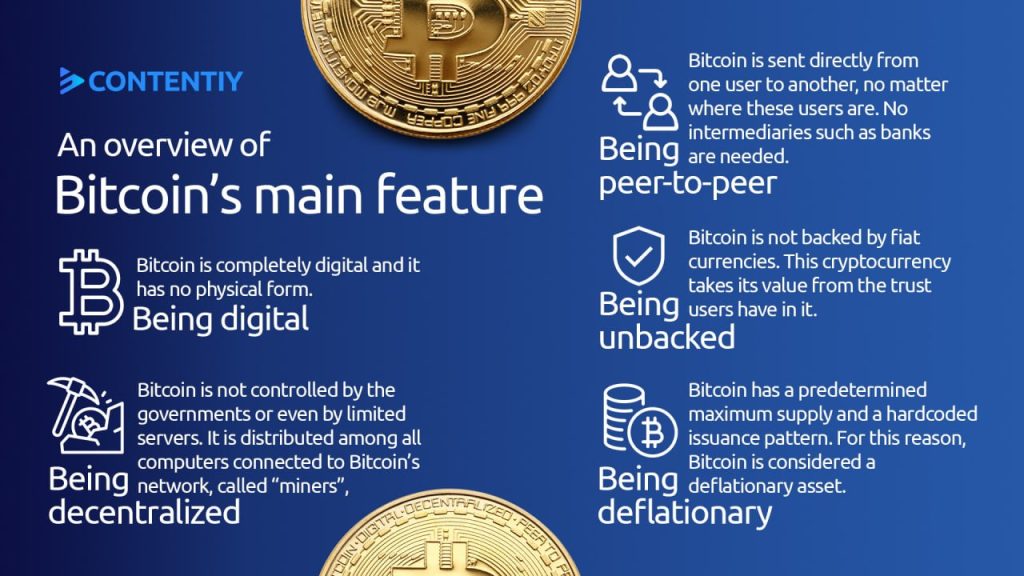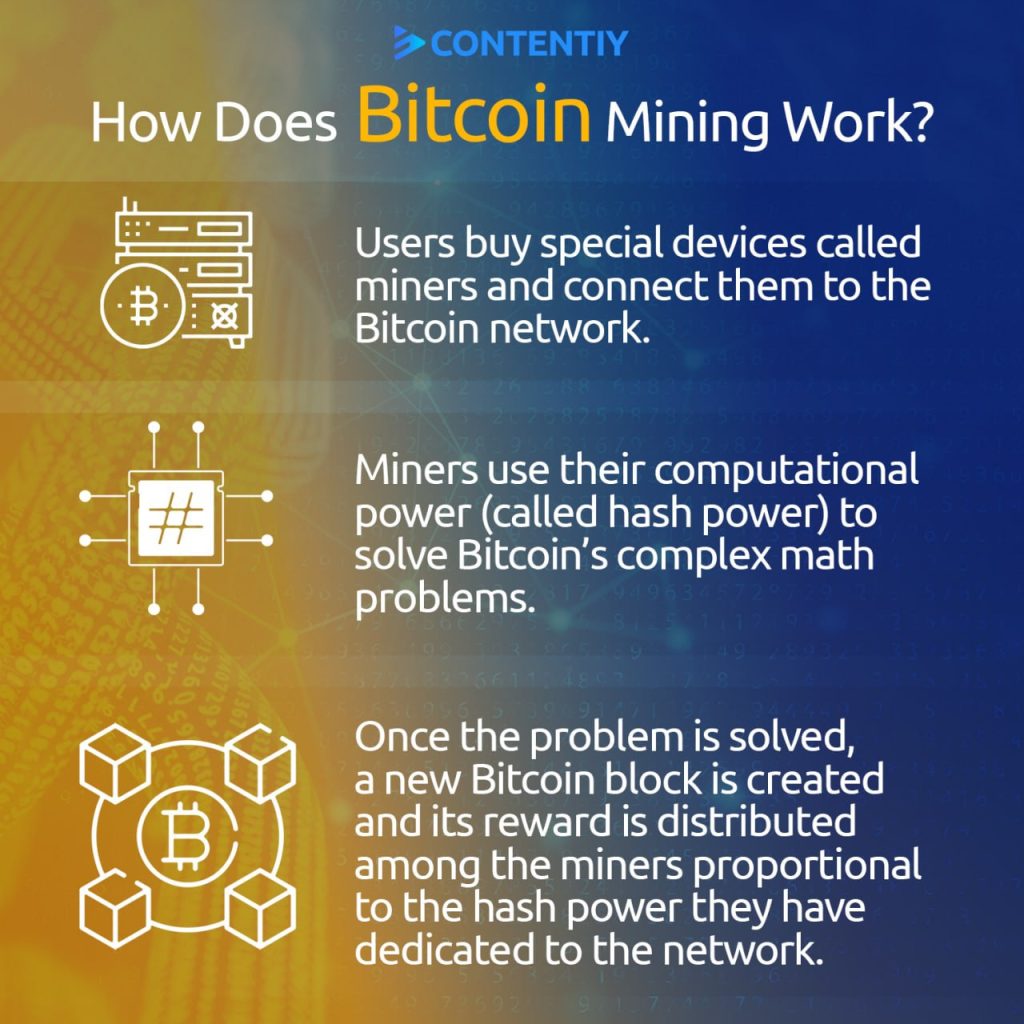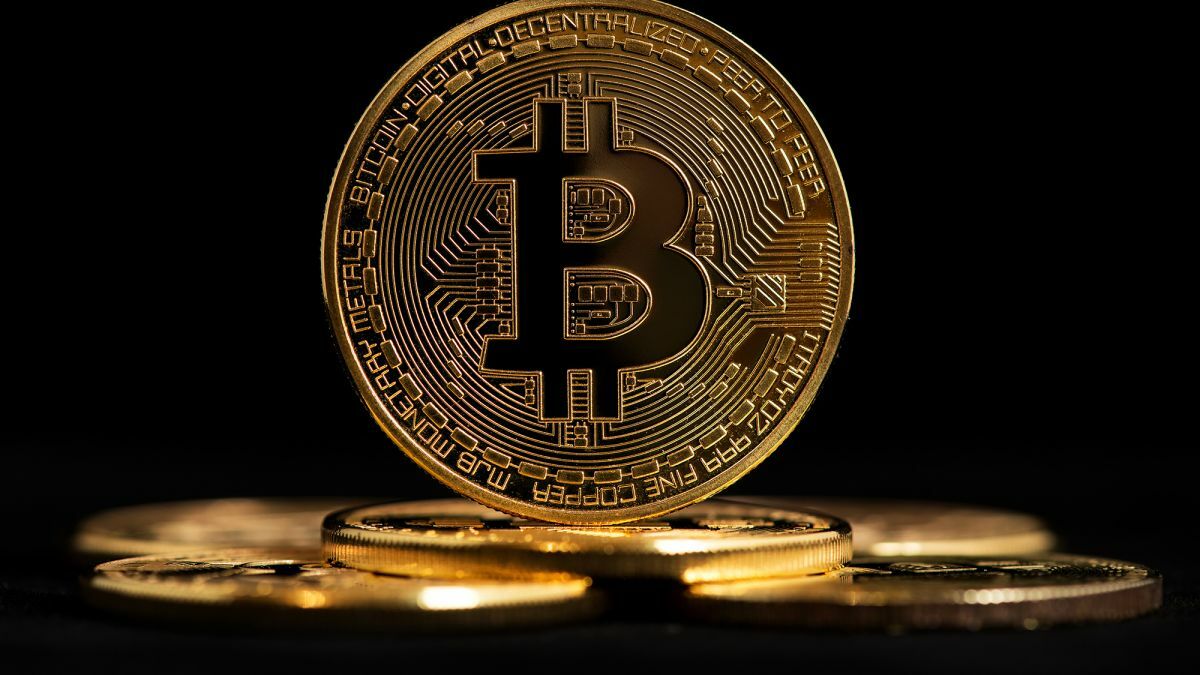What is Bitcoin?
The best definition of Bitcoin is the title of its whitepaper: “A Peer-to-Peer Electronic Cash System.” First of all, Bitcoin is electronic. So, Bitcoin doesn’t have any physical form. All images of Bitcoin you see on the Internet (gold coins with a B letter) are just decorative. No physical Bitcoins exist.
Second, Bitcoin is peer-to-peer. What does it mean? It means that transferring Bitcoin doesn’t need intermediaries like banks. Any Bitcoin user can send Bitcoin directly to another user on the other half of the globe. The only thing you need to transfer bitcoins is the recipient’s address.
Third, Bitcoin is cash. This part requires clarification. Bitcoin is similar to cash in that once you pay it or send it to another party, you can’t take it back easily. Imagine you transfer some amount of fiat money to the wrong address. In this case, you can go to the bank and take their help to solve the issue. If you send your bitcoins to the wrong address, you have to consider them gone since no intermediary exists to solve the issue.
Another key feature of Bitcoin is that it is unbacked. Fiat currencies or the government does not back Bitcoin. This cryptocurrency takes its value from its users’ trust, and its price is determined by supply and demand. When Bitcoin’s demand increases and many users race to buy it, its price increases. On the other hand, when the demand for Bitcoin decreases and there is a rush to sell it, its price decreases. This may seem impossible because we are used to government-backed currencies, but if you think more deeply, you find it logical. What are fiat currencies without users’ trust? They are worth-less papers or worth-less numbers shown on the ATMs. What gives value to fiat currencies is the trust we have in our governments. The same is true about Bitcoin.
Bitcoin has a maximum supply of 21 million units, with approximately 19 million already mined. New bitcoins are issued every 10 minutes, but the predetermined issuance pattern and supply cap prevent inappropriate inflation. This fundamental feature of Bitcoin makes it deflationary. The digital peer-to-peer currency is not backed by governments, but rather by user trust. While the basics of Bitcoin have been explained, there are still technical and fundamental details that may pique the interest of cryptocurrency enthusiasts. Stay with us to learn more.

How are new units of Bitcoin created? Bitcoin mining explained
Bitcoins are created using devices called “miners.” Miners are ASIC computers used for mining new units of Bitcoin. ASIC stands for an application-specific integrated circuit. So, miners are computers specifically designed for mining Bitcoin.
The term “mining Bitcoin” may seem confusing initially, but don’t worry since it is simple. Twenty-one million units of Bitcoin were hardcoded in the Bitcoin blockchain from the beginning. Miner devices must solve complex math problems and gain bitcoins as a reward. These math problems have no real-world value. They are only solved to prove that some work has been done. In return for the computational power they dedicate to the network and the electricity they consume, they get rewarded in bitcoin. The bitcoins given to miners are the newly minted or the newly-mined bitcoins.
Bitcoin has a unique feature called difficulty. The Bitcoin network was developed so that new bitcoins get mined every 10 minutes. So, when the number of miners and the total hash power increases, the difficulty of these math problems increases too, and vice versa. The difficulty is adjusted so that Bitcoin blocks are created, and rewards are distributed every 10 minutes.
Besides, Bitcoin makes use of another mechanism called halving. The purpose of halving is to halve the mining reward every four years. Bitcoin’s mining reward was 50 units per block at first. The first halving occurred in 2012 and decreased the mining reward to 25 units per block. The next halving will happen in 2024, decreasing this reward to 3.125 units per block. The second halving occurred in 2016, and the third one (the last one now) appeared in 2020. Therefore, at the time of writing, Bitcoin’s mining reward is 6.25 units of Bitcoin per block.
The combination of difficulty and halving reveals that the last unit of bitcoin will be mined in 2140. As you see, everything is predicted, predetermined, and hard-coded. Do you know any other form of money with these fabulous features?

How are bitcoins bought, stored, and transferred?
For storing Bitcoin and all other cryptocurrencies, you need cryptocurrency wallets. Cryptocurrency wallets are available in the form of applications and hardware devices. They all have in common that they give you a private key you can use to access your cryptocurrencies and an address for each cryptocurrency. The address is what you give to others, while the private key is what you must keep confidential and secret.
Running a cryptocurrency wallet doesn’t require you to give your personal information and pass KYC. It is as easy as downloading an application and installing it. This is another exciting feature of Bitcoin. Bitcoin’s transactions are pseudo-anonymous. No one knows if you are a 15-year-old teenager or a 50-year-old lady. This is not important at all. Bitcoin is here for all people of all genders, colors, races, religions, and nationalities.
However, if you want to buy bitcoin with fiat money, the best option is to use a cryptocurrency exchange. Cryptocurrency exchanges have different regulations. Some require their users to pass KYC, while others necessitate KYC for withdrawals or trades bigger than a specific limit.
Do I have to buy at least 1 unit of Bitcoin?
A common misunderstanding about Bitcoin is that the minimum amount of Bitcoin a user can buy is 1. At the time of writing, each Bitcoin unit is traded at around $19k. This high price worries some Bitcoin enthusiasts and makes them hesitant to buy this cryptocurrency. We have to inform you that Bitcoin is divisible into smaller units. The smallest unit of Bitcoin is called a satoshi (named in honor of Bitcoin’s creator, Satoshi Nakamoto). 1 Bitcoin is divisible into 100,000,000 satoshis. Therefore, if you want to buy Bitcoin but are worried about the high price, don’t worry anymore.
Conclusion
Bitcoin is not only the world’s oldest cryptocurrency but is still the most popular one. This is not just a claim. The available data, including the market cap, proves it. Bitcoin is the largest cryptocurrency by market cap. It has had ups and downs in its lifetime, but it has never lost its fans. Bitcoin is the first option that newcomers who want to make their first investments in cryptocurrencies consider. Have you ever invested in Bitcoin? What other cryptocurrencies does your investment portfolio include? Please share your experiences with us.
What is Bitcoin?
Bitcoin is a decentralized digital currency, also known as a cryptocurrency, that operates on a peer-to-peer network. It allows for secure, direct transactions between individuals without the need for intermediaries such as banks.
How does Bitcoin work?
Bitcoin transactions are recorded on a public ledger called the blockchain. Transactions are verified by a network of computers, called nodes, through a process called mining. The verified transactions are then added to the blockchain as blocks, forming a chain of blocks, hence the name blockchain.
How do I get Bitcoin?
You can obtain Bitcoin through a process called mining, by purchasing it on a cryptocurrency exchange, or by accepting it as payment for goods or services.
Is Bitcoin safe?
The security of Bitcoin is ensured by its decentralized structure and cryptographic algorithms. However, like with any asset, there are risks involved with holding or using Bitcoin, including hacking, loss of private keys, and market volatility. It is important to properly secure your Bitcoin and educate yourself on safe storage and usage practices.



2 responses
I’m often to blogging and i really appreciate your content. The article has actually peaks my interest. I’m going to bookmark your web site and maintain checking for brand spanking new information.
Nice post. I learn something totally new and challenging on websites